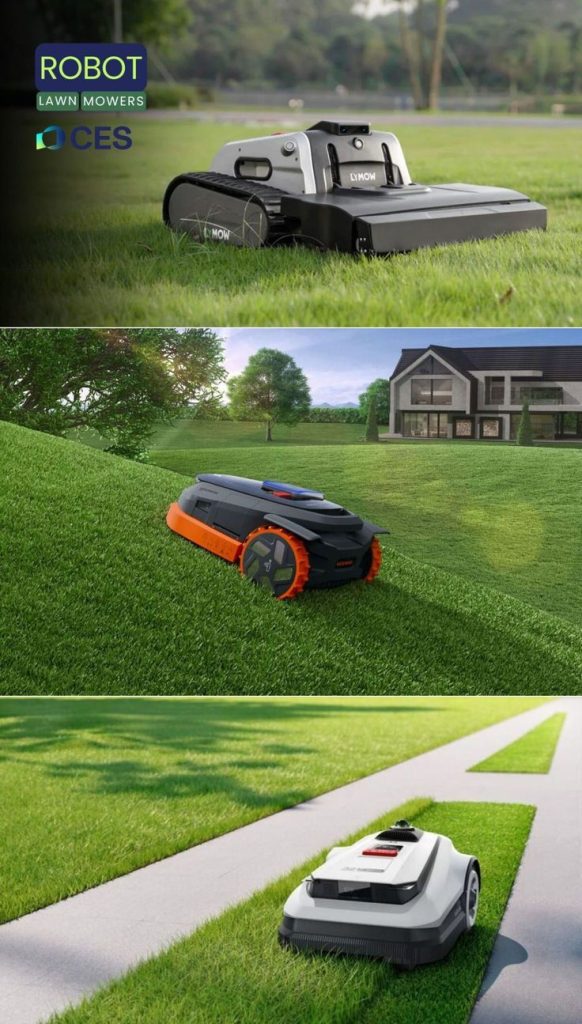Robotic lawn mowers have revolutionized yard maintenance, promising effortless upkeep and a consistently pristine lawn. However, with a diverse market offering various models, each with its own set of strengths and weaknesses, choosing the “best” can be subjective. Understanding the general pros and cons associated with different categories of robot mowers is crucial for making an informed decision that aligns with your specific lawn care needs and budget.
Understanding Robot Mower Categories
best robot mower can generally be categorized by their intended lawn size, navigation technology, and feature sets. While specific models will vary, these categories help in understanding their inherent advantages and disadvantages.
Category 1: Entry-Level / Small Lawn Mowers
These models are typically designed for smaller urban or suburban lawns (up to 0.25 acres). They often feature simpler navigation and fewer advanced features.
Pros:
- Affordability: Generally the most budget-friendly option, making robotic lawn care accessible to more homeowners.
- Simplicity: Easy to set up and operate, often with straightforward boundary wire installation and basic app controls.
- Compact Size: Smaller footprint, making them easy to store and maneuver in tight spaces.
- Quiet Operation: Like most robot mowers, they are significantly quieter than traditional gas mowers.
Cons:
- Limited Capacity: Not suitable for larger lawns; they would take too long or require too frequent charging.
- Basic Navigation: Often rely on random mowing patterns, which can be less efficient and may miss spots on complex lawns.
- Fewer Advanced Features: May lack GPS tracking, advanced obstacle avoidance, or sophisticated scheduling options.
- Less Durable: Construction might be less robust compared to high-end models, potentially affecting longevity with heavy use.
Category 2: Mid-Range / Medium to Large Lawn Mowers
These mowers cater to medium to larger lawns (0.25 to 0.75 acres) and strike a balance between features, performance, and cost.
Pros:
- Improved Efficiency: Often feature GPS-assisted or systematic navigation patterns for more efficient coverage and faster mowing times.
- Enhanced Features: Typically include rain sensors, more advanced scheduling, multi-zone management, and better obstacle detection.
- Better Durability: Generally built with more robust materials to withstand longer operating hours.
- Good Value: Offer a significant upgrade in performance and features without the premium price tag of top-tier models.
Cons:
- Higher Cost: More expensive than entry-level models.
- Still Wire-Dependent: Many models in this category still require boundary wires, which can be time-consuming to install.
- May Struggle with Extreme Slopes: While better than basic models, they might not handle very steep or complex inclines as effectively as specialized models.
Category 3: High-End / Large Lawn & Advanced Feature Mowers
These are the premium models designed for large properties (0.75 acres and above) and come packed with the latest technology.
Pros:
- Superior Capacity & Performance: Can handle very large lawns efficiently with long battery life and powerful motors.
- Wire-Free Navigation: Many utilize RTK-GPS, vision-based systems, or other advanced technologies, eliminating the need for boundary wires and simplifying installation.
- Advanced Features: Offer sophisticated object recognition, smart home integration, remote disabling (anti-theft), and precise edge cutting.
- Excellent Slope Handling: Models in this category often feature all-wheel drive and robust designs to tackle significant inclines.
- Enhanced Security: Typically include comprehensive anti-theft measures like GPS tracking and alarms.
Cons:
- High Price Tag: These are the most expensive robot mowers on the market.
- Complex Technology: While user-friendly once set up, initial setup or troubleshooting of advanced navigation systems can be more involved.
- Potential Subscription Costs: Some wire-free models may require a cellular or cloud service subscription for full functionality, adding to the long-term cost.
- Overkill for Small Lawns: Their advanced capabilities and higher cost are unnecessary for smaller, simpler yards.
General Pros and Cons of All Robot Mowers
Overall Pros:
- Time-Saving: Frees up significant time previously spent on mowing.
- Consistent Cut: Mows frequently, leading to a healthier, denser, and consistently neat lawn.
- Quiet Operation: Allows for mowing at any time without disturbing neighbors or family.
- Eco-Friendly: Electric operation means zero emissions during use.
- Mulching: Most models finely mulch grass clippings, returning nutrients to the lawn.
Overall Cons:
- Initial Investment: Higher upfront cost compared to traditional mowers.
- Boundary Setup: Many still require boundary wire installation, which can be time-consuming.
- Obstacle Clearing: Lawns need to be clear of small objects (toys, branches) before mowing.
- Edge Trimming: May still require manual trimming along edges or around complex obstacles.
- Maintenance: Requires occasional cleaning of blades and sensors, and blade replacement.
Conclusion
The best robot mower model for you depends entirely on your specific lawn size, complexity, budget, and desired features. By weighing the pros and cons of each category and considering your individual needs, you can confidently select a robot mower that will transform your lawn care experience, providing a beautiful yard with minimal effort.

